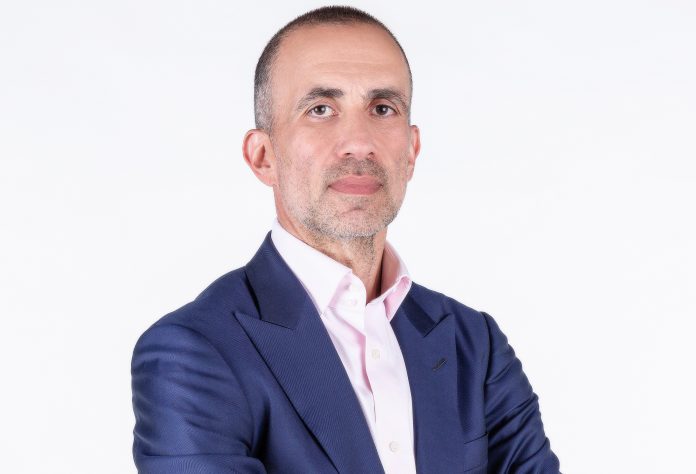What is BNY Mellon’s overarching philosophy around Open Banking?
We’re in a rapidly changing industry and markets landscape—from both a business and a technology perspective – where client needs, requirements and expectations change quickly.
In response, we introduced an open-architecture approach to our core operating model. Open architecture gave us the ability to collaborate and integrate with the relevant market players of choice: fintechs, traditional providers, and clients.
We transformed the institutional space in 2019 by launching a series of industry-first front-to-back alliances with Amundi ALTO, BlackRock Aladdin, Bloomberg AIM, and SimCorp Dimension.
Open architecture is a collaborative, integrated approach that enables us to 1) respond to clients evolving needs fast; 2) offer clients greater choice and flexibility through an ever-expanding suite of proprietary and third-party solutions; 3) and have access to innovation through BNY Mellon’s reliable, resilient and safe global infrastructure. Through this model, BNY Mellon is able to provide innovation and efficiency at scale for clients and other market participants.
Our focus is on three main drivers of value: accelerating new product development, bolstering our own and our clients’ operational resiliency and efficiency, and enhancing the client experience. This open mindset has allowed us to participate in meaningful collaborations and strategic investments that ultimately help drive improvement across the industry.
Would you say that Open Banking is now the norm in the regional day-to-day banking experience?
When we first went live with BNY Mellon OMNISM, our Open Architecture platform three years ago, we were virtually the only ones in the market pursuing this. Following the successes, we now see a sharp uptick, with more companies embracing the approach globally.
As one of the world’s most dynamic and evolving markets, the Middle East is a prime jurisdiction for Open Banking to take hold. Open banking is evolving in the region and starting to gain traction, with the UAE and Saudi implementing enabling regulations in order to promote adoption. In 2020, the Dubai Financial Services Authority (DFSA) commenced the UAE’s involvement in the open banking sector by granting licenses to specific entities.
In 2021, The Financial Services Regulatory Authority of the Abu Dhabi Global Market introduced a new framework to supervise FinTech companies that provide third-party services to customers. Additionally, the framework is set to provide a foundation to support the growth of open banking in the UAE with a focus on customers having control over their financial data.
In the Kingdom of Saudi Arabia, the Saudi Central Bank (SAMA) issued its first open banking policy in 2021, which expected to go live this year. The policy is a pivotal movement for the Kingdom as it seeks to further develop its financial sector in line with its Vision 2030 and to help foster collaboration amongst financial market players. Global market realities and shifting client needs, combined with rapidly advancing technologies, will see the increased need for open banking becoming the norm. Moreover, Allied Market Research estimates that the global open banking market is projected to reach $43.15 billion by 2026; we expect to see other countries in the region increase their focus on supporting growth in order to capitalise on the vast market opportunity.
Given the region’s vibrant fintech and innovation community, we certainly expect the trend of collaborations and open architecture to continue. In fact, we ourselves are actively pursuing it in the region and collaborating with the regional fintech organizations.
We are proud to be helping to deliver a future-ready market infrastructure in the Gulf Cooperation Council based upon a common data management platform that connects market participants.
How do you assess Open Banking propositions to ensure positive experiences for clients and customers?
Our goal is to provide clients with greater flexibility and agility to help grow, future-proof and transform their businesses. BNY Mellon already offers a range of services which all form part of the open-architecture platform. We have differentiated capabilities in distribution, ESG, liquidity, markets, data and much more covering all parts of the investment lifecycle.
When evaluating propositions, we consistently consider the ever-evolving technology landscape and offer solutions designed to respond to advances in machine learning, AI, and digital assets. We are also sharply focused on customization, recognizing that a one-size fits all approach does not fit every client.
The natural evolution of our open platform will be the creation of a fully integrated front-to-back platform capable of hosting all BNY Mellon and third-party solutions. For those clients who are looking to reduce their technology and infrastructure costs, this will create a single integrated environment that will host, manage, support and service their digital and data requirements.
Do you foresee a point where API’s have developed as far as naturally possible or will there always be space for continual innovation in banking services?
We believe there is infinite room to innovate across platforms and functions, and APIs are no exception to that rule. APIs are helping to provide new opportunities for collaboration, efficiency and the delivery of financial services globally. With API adoption continuing to accelerate industry-wide, investment and human capital will continue to drive greater innovation in the financial industry.
APIs are helping to deliver more seamless payments and transactions for clients, allowing firms to increase service offerings and streamline the client experience digitally. In our own business, we’re continually augmenting our API offerings for clients and third parties, which are focused on the accessibility of data and enable technology integrations. Our well-established and robust API library is interconnected and seamless within our front-to-back service model and platform.
What does the move to Open Banking mean for banks in terms of risk assessment and liability?
Open Banking can enable organizations to better assess and reduce risk through faster and more accurate monitoring and insights. As with any industry innovation or shift, especially one involving massive amounts of consumer data, there is risk involved. But as one of the world’s premiere financial institutions at the intersection of trust and innovation, risk management is embedded into BNY Mellon’s DNA.
For Open Banking to be successful industry-wide, market participants will need to take a more proactive approach to risk and compliance and focus on data quality and cybersecurity.
We believe that adopting forward-looking tools, such as risk monitoring to predict investment breaches, will be critical to success. We also work closely with clients to ensure data integrity. We use bots, for example, in some of our fund-accounting operations today. Advanced technologies such as artificial intelligence and machine learning will continue to play an important role in securing the industry as Open Banking continues to gain momentum.










